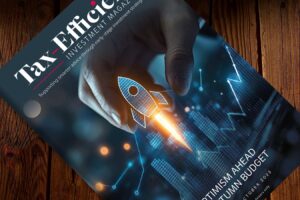Nearly every recent business conversation seems to end up touching on the topic of Artificial Intelligence (AI). At this stage, almost everyone has a view and I find each discussion fascinating says Stuart Breyer, CEO of Mallowstreet. For me, it is this speed of uptake and innovation that I find most impressive – after all, the first version of ChatGPT was released only about two years ago. Yet now, AI is being deployed in practically every sector and, crucially, across nearly every aspect of business. This allows for better processing and deeper analysis, all ultimately driving efficiency. But you may ask, how could the institutional pensions sector influence such rapidly evolving tech?
First identify the use case
Before a business plunges headfirst into AI, it is important to identify the use case – the exact problem you are trying to solve. In my experience it is vital to be as specific as you can. This specificity allows you to trial and test various tools and applications that could help you achieve your exact goals. In this process, experimentation is very important: I’ve found it very beneficial to trial a few tools simultaneously so you can see side-by-side comparisons, in real time.
Our use case: the meeting
We built our own AI tool SOFI to analyse a meeting. We all have meetings – lots of them – and maybe too many. So, we started our AI journey by asking ourselves the simple question: how can we help make meetings, and the follow-up, more efficient and effective?
Our approach to answering this question came from an organisational mindset. We leveraged our deep understanding of financial services, wealth management, retirement savings and pensions – versus simply act as a technology company looking to develop a new tool. We used our industry-specific knowledge to train SOFI to fluently summarise financial meetings and discussions, as well as surface key actions and takeaways. We also built the capability to analyse a meeting through SOFI’s lenses – covering risk, return, liquidity profile, investment time horizon, growth versus matching investment characteristics, and ESG. The result was amazing. As a meeting attendee, you could now actively listen and truly pay attention – feeling 100% present, knowing that SOFI is in the background ensuring no points from the conversation are missed. Then came our second round of development.
This time, we asked ourselves: if SOFI can do all of this for one meeting, can we apply SOFI analysis to a series of related meetings, to highlight key themes, identify discrepancies and surface common questions? This was the genesis of our Multi-Vertical Analysis (MVA). MVA unlocked our trend analysis tools and paved the way for the development of ‘SOFI scores’, which is how we quantify key information. For example, how much time does each participant speak (soapbox score), how many ‘ums’ and ‘ahs’ do you say (disfluency score), and how can you refine presentation and pitches? With this layer, SOFI has also become a pitch/ presentation practice tool – providing feedback that is objective, consistent, and transparent.
Driving continued innovation
I thought (rather naively) that SOFI usage would reduce over the summer months as people went on holiday and business activity slowed. Our experience was the exact opposite. We saw our users increase their usage of SOFI, and in doing so, they have given us so many helpful ideas. They often email to say ‘SOFI’s analysis is brilliant – but it would be amazing if could do (insert fantastic idea).’ All of these ideas now form the core of our development road map.
Looking back on our journey with SOFI, we’ve created a suite of tools to help make a meeting more efficient – it can now write a call report, and best of all, the user can specify the format, style, and identify the components of a meeting that are important specifically to them. The ability for each user to customise the output from SOFI to suit their needs has been the true gamechanger – as it has allowed personalisation on an individual level.
Driving innovation
I often hear people say that AI is here to destroy a swath of jobs and ultimately take our roles. I don’t agree with this statement. What I believe is that it is the people who know how to use AI and apply its incredible power in business applications and use cases who are coming for our jobs.
Innovation is (or should be) at the heart of any business. The efficiencies AI can create for organisations is mind blowing. For our institutional clients, it usually takes about 30 minutes to write up a client meeting call report. If someone has an average of 15 meetings per week, SOFI is able to save them 7.5 hours each and every week. Compound this time saved over a year, and across a team, and the burden lifted is incredible. For our wealth clients, it saves them about two hours of follow-up for each meeting. If an average advisor is having about 20 meetings per week, that is 40 hours saved each week! This time allows the existing team to be more applied and significantly grow the business even with the same current level of resources.
If you have one takeaway from this article – if you aren’t already using AI, start in your business today. Identify the use cases, find the tools that solve the problems you need help with, and enjoy the compounding gains of time saved across everyone in your business. – You never know where experimentation can take you, who would think in-depth discussions with pension trustees could influence the formation of an AI meeting App?
I’ve experienced it first hand and the benefits of AI are truly meaningful – and the impact on my business has been transformational.









![[UNS] tax](https://ifamagazine.com/wp-content/uploads/wordpress-popular-posts/788955-featured-300x200.webp)
![[uns] house of commons, parliament](https://ifamagazine.com/wp-content/uploads/wordpress-popular-posts/788873-featured-300x200.webp)




